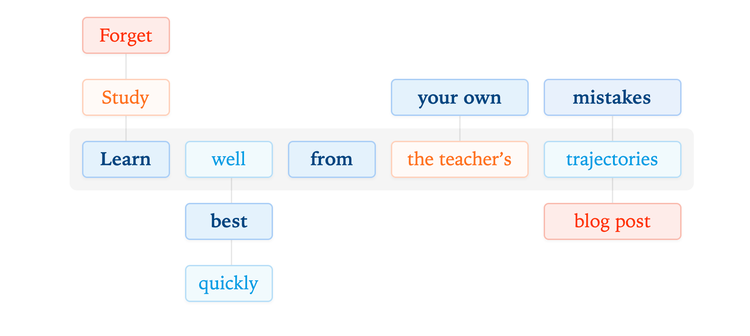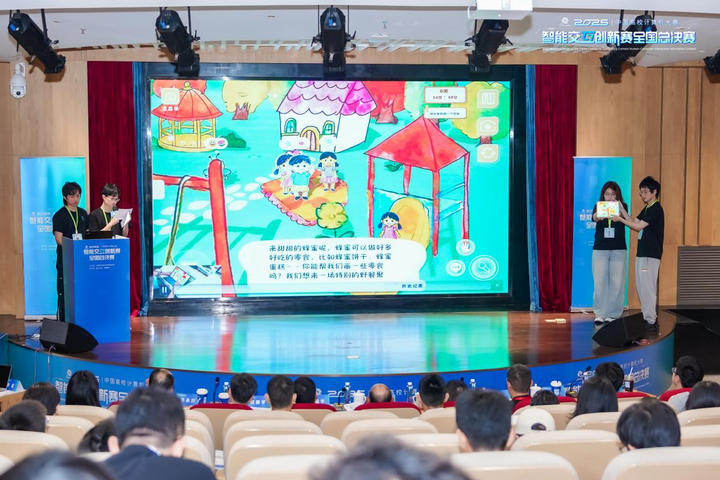The Secret to Boosting AI Learning Efficiency by 50×: Online Strategy Distillation

Interpreting Thinking Machines Lab’s Latest Research: On‑Policy Distillation


---
Introduction: Rethinking How Machines Learn
Imagine you’re teaching a student to write an essay.
- Traditional way: Give them ten sample essays and tell them to imitate.
- → This is imitation learning.
- Problem: Faced with a new topic, they struggle.
- Alternative: Let them write freely, and guide them during the process — step‑by‑step feedback on logic, tone, or coherence.
This second method mirrors real learning far more closely.
> This is the inspiration behind Thinking Machines Lab’s recent study, On‑Policy Distillation (original link):
> Models learn and optimize themselves along the trajectory of their own actions, with dynamic guidance at every step.
Simple in concept — potentially transformative in practice.
---
1. Who Are Thinking Machines Lab?
- Founded by Mira Murati (former CTO of OpenAI) after leaving the company.
- Joined by John Schulman and Barret Zoph, key figures in the creation of ChatGPT and RLHF breakthroughs.
- Research focus: how to teach models to learn, not just to respond.
Authors: Kevin Lu, John Schulman, Horace He, and collaborators bring deep expertise in Reinforcement Learning with Human Feedback and distillation.
Core Question: Is the current method of AI learning fundamentally flawed?
---
2. The Bottleneck: Is AI Just Memorizing?
Training large models typically involves two stages:
- SFT – Supervised Fine‑Tuning
- Show the model massive volumes of human‑written text.
- Goal: imitate past answers.
- RLHF – Reinforcement Learning with Human Feedback
- Encourage human‑preferred responses through exploration.
- Goal: improve answers via trial and feedback.
Issue: These stages are misaligned.
- SFT: Rote memorization.
- RLHF: Risk‑taking exploration.
- Result: Models oscillate between safe imitation and reckless novelty.
---
3. The New Method: Learning While Doing
Traditional Distillation
- Teacher model produces a “perfect” answer.
- Student learns to replicate it.
On‑Policy Distillation
- Student generates a response first.
- Teacher scores and advises in real time, improving each step.
- “On‑Policy” = learning along the model’s own generated trajectory, not solely from pre‑written correct answers.
Key concept: Teach the process of reaching an answer, not just the final answer itself.
---
4. Core Innovation: Moving From Rewards to Scoring
RLHF:
- Entire answer generated → then graded once.
- Feedback after completion = slow learning.
On‑Policy Distillation:
- Feedback per token/word — ultra‑granular supervision.
- Like a writing coach commenting live:
- “Good phrasing 👍”
- “Logic needs work 👎”
Impact: Models learn faster and refine thinking continuously.
---
> This “dense supervision” can accelerate adaptability and could integrate with creative ecosystems.
> Platforms like AiToEarn官网 already apply learn‑while‑doing to human content creators — combining AI training concepts with cross‑platform publishing, optimization, and monetization for text, video, and graphics.
---
5. Results: Faster, More Stable, Cheaper
When tested on AIME’24 math benchmarks, models trained via On‑Policy Distillation:
- Surpassed RLHF in performance
- Required less computation
- Produced more stable and reproducible outputs
Summary: Moving from “punishment and reward” to “demonstration and correction” transforms training efficiency.
---
6. Why It Matters: A Learning Theory Shift
Historically:
- Feed models massive datasets → expect statistical imitation of humans.
Thinking Machines’ viewpoint:
- True intelligence = reflecting on one’s own actions.
With On‑Policy Distillation:
- Models refine themselves as they work.
- The dream of a self‑improving AI agent becomes more tangible.
Future vision: Your AI assistant adapts over time by learning from daily tasks and experiences — on‑policy learning quietly operating in the background.
---
7. The Takeaway
In AI development:
> Changing our training philosophy may be more important than scaling hardware.
Thinking Machines Lab’s paper urges a shift:
- Not bigger models
- Better learning mechanics
When AI asks itself “Why did I say that?”, we may be witnessing the second awakening of intelligence:
- First: Machines learned to speak
- Second: Machines learned to self‑reflect

---
Broader Ecosystem Impact
Platforms like AiToEarn官网 enable creators to leverage self‑learning AI models for publishing and earning across Douyin, Kwai, WeChat, Bilibili, Xiaohongshu, Facebook, Instagram, LinkedIn, Threads, YouTube, Pinterest, and X (Twitter) — merging technical innovation with practical workflows.
---
References:



